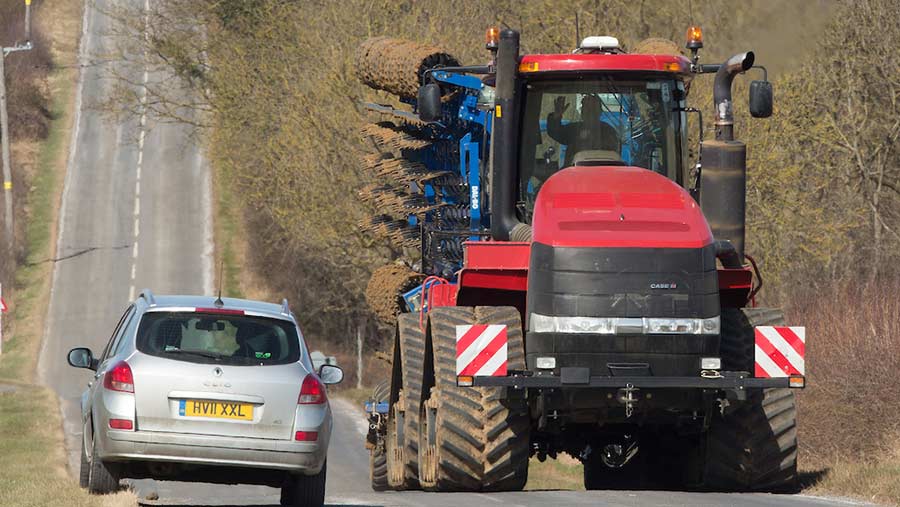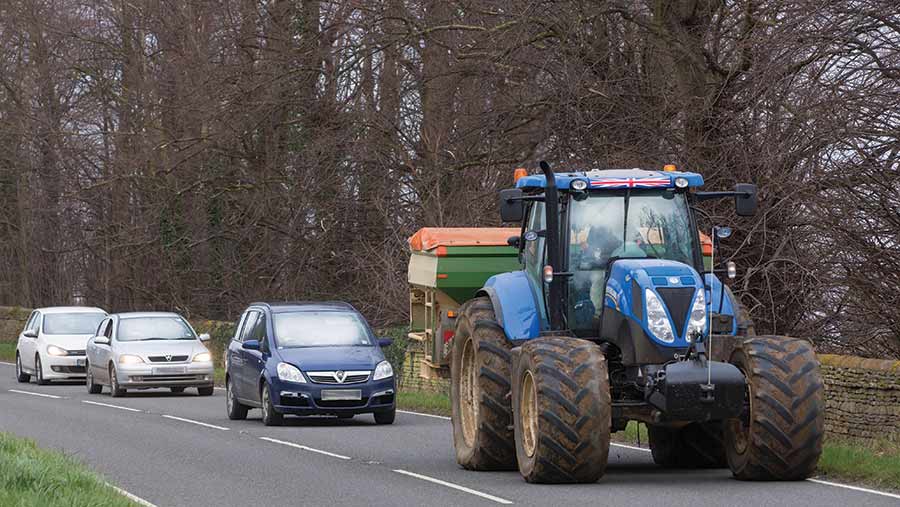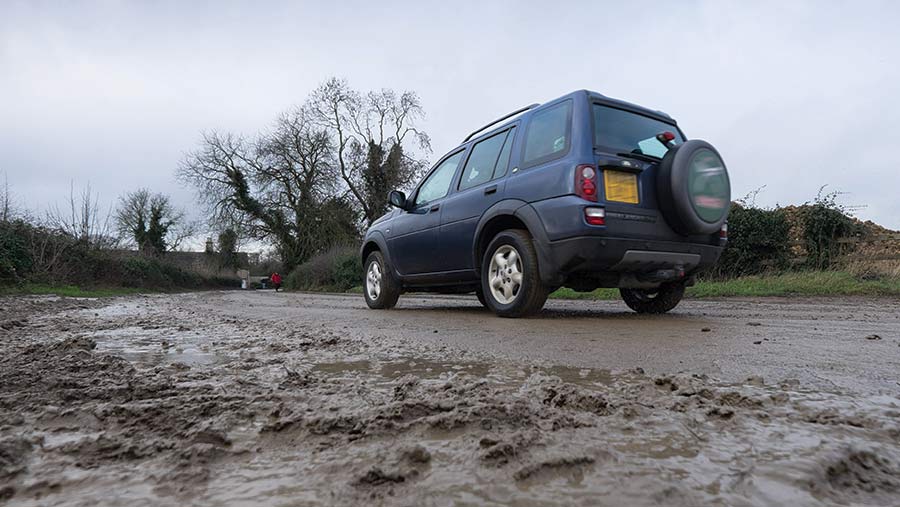Tractors on the road: Rights, wrongs, rules and regulations
When harvest is in full swing, tractors take to the roads up and down the country. It may seem unfair to farmers and contractors, but the presence of a greater number of slow-moving vehicles can cause real frustration among other road users.
Police advice for drivers who get stuck in a tailback behind a tractor is to be patient, avoid taking risks when overtaking and set off a bit earlier to be sure they have enough time for their journey.
However, farmers and farmworkers are encouraged to play their part by thinking more about the effects their driving may have on other people.
Accident data
In the year ending June 2019, there were 1,870 reported road fatalities and 27,820 people killed or seriously injured reported to the police.
Latest figures reveal that agricultural vehicles were involved in 488 accidents in 2018, of which 130 were classed as serious accidents and 29 led to fatalities.
Source: Department for Transport
See also: Tractor driving – the law for 16-year-olds
While agricultural vehicles are only involved in a very small percentage of total road accidents, when they are, the results can be devastating.
We asked Jill Hewitt, chief executive of the National Association of Agricultural Contractors and Tom Price, NFU farm safety and transport policy adviser, for a quick guide to the road rules people need to remember.

©Tim Scrivener
Traffic queues
- Rule 169 of the Highway Code states: “Do not hold up a long queue of traffic, especially if you are driving a large or slow-moving vehicle. Check your mirrors frequently, and if necessary, pull in where it is safe and let traffic pass.” Failure to follow this rule can result in a charge of inconsiderate driving which could lead to a penalty of three to nine points and fines of up to £5,000.
- So what constitutes a “long queue of traffic”? In a press statement issued in 2014, Dyfed and Powys police claimed tractor drivers should pull over as soon as they got six cars behind them – but this would clearly be impractical on busy roads.
- The NFU recommends tractors should only pull over when it is safe and reasonable to do so. But it warns the police might take enforcement action if they see a tractor driving past a passing place or lay-by without stopping.
- The National Association of Agricultural Contractors points out there are passing places suitable for cars where a large tractor and trailer may not be able to safely pull in or out. The key, however, is to judge sensibly and keep letting traffic through whenever possible.

©Tim Scrivener
Tractor and trailer weights
- In March 2015, the maximum combination weight of a tractor and single trailer increased from 24.39t to 31t. However, the maximum laden weight of trailers remained unchanged at 18.29t which means while farmers can legally use a bigger tractor, they are still restricted on the weight of the trailer.
- Efforts to increase the combined maximum weight of a tractor and trailer are ongoing.
Tractor speeds
- The speed limit for a tractor and trailer up to 2.55m wide is 40kph (approx. 25mph), while high spec tractors such as a JCB Fastrac and Mercedes Unimog, can travel to 64kph (40mph).
- Tractors over 2.55m wide and under 3.5m, or any tractor pulling a trailed appliance such as a baler or sprayer, can only travel to 20mph. Anything over 3.5m is limited to 12mph.
Young drivers
- While young farmers are able to drive on the road as soon as they pass their tractor test at age 16, they can only drive a tractor less than 2.45m wide and tow trailers less than 2.45m wide with two wheels, or four wheels close-coupled until they reach the age of 17.
- The tractor test also only enables younger drivers to drive a tractor on the road – they are not able to drive a telehandler or move the combine harvester as these will exceed the 3.5t weight limit for 17- to 18-year-olds and the 7.5t limit for 18- to 21-year-olds. In practical terms, this means to drive a combine harvester or telehandler on the road people need to be at least 21.

©Tim Scrivener
Mud on the road
- Farmers and contractors who deposit mud on the road open themselves up to a range of offences under the Highway Act 1980, the Road Traffic Act 1988 and to civil prosecution.
- Section 137 of the Highways Act states if a person wilfully obstructs the free passage along a highway they are guilty of an offence. Section 148 adds: “If without lawful authority or excuse a person deposits anything whatsoever on a highway to the interruption of any user of the highway he is guilty of an offence.”
- Section 149 says if anything is deposited on the highway which constitutes a nuisance or danger the Highway Authority can require the person who put it there to remove it.
- The Act goes on to say if anyone is injured as a result of a deposit on the highway then the person who left it is guilty of an offence.
- The Road Traffic Act 1988 also covers situations where a mechanically propelled vehicle is driven dangerously on a road. Driving dangerously can include moving a vehicle in a state that could cause danger to others because it deposits mud on the road.
- It is therefore recommended that farmers put out “slippery road” signs with a secondary “mud on road” message to alert other road users. However, the signs do not eliminate the farmer’s obligation to do something about the mud, including cleaning as much mud as possible from the vehicle before leaving the field gate.
- The road should also be cleaned as necessary through the working day and always at the end of the working day.
- If a contractor is engaged, there should be a clear discussion about who is taking responsibility for putting out signs and taking on the clear-up, with a written record kept of the conclusions.
Children in the cab
- A ride on the combine at harvest time has traditionally been one of the rights of passage of growing up on a farm. However, the law is clear on the subject – it is illegal for anyone under the age of 13 to drive or ride on a combine or tractor even if it is fitted with a passenger seat.
- The HSE points out that children can and do fall from the doorway or the rear window, distract the driver or unintentionally operate controls if the driver gets out to open a gate.
Mobile phones
- It is illegal to use a mobile handheld phone when driving on the road, even if you are stopped in traffic or at lights.
- The penalty could be a minimum of three points going up to six points and £200 spot fine, but if the case goes to court you could be disqualified from driving and the bill could hit £1,000.
- If you are involved in an accident because of mobile phone use then the consequences are likely to be far more serious.
- It is legal to use hands-free phones, satnavs and two-way radios when driving. However, if the police think the driver is distracted and not in control of the vehicle they can still get stopped and penalised.

